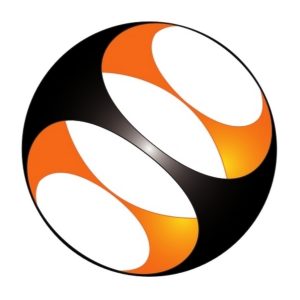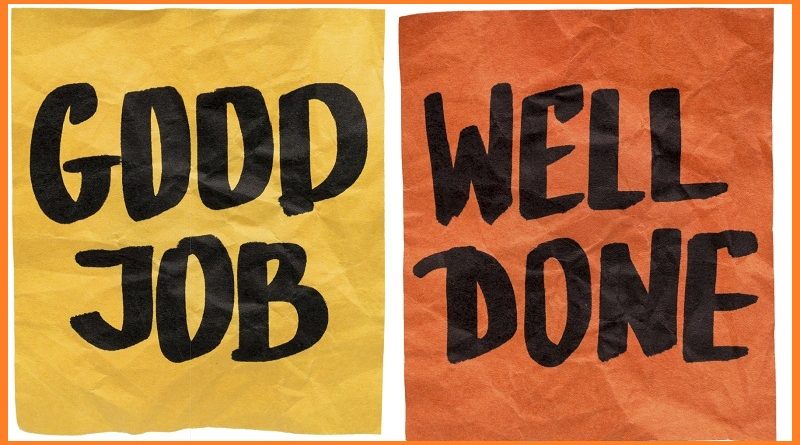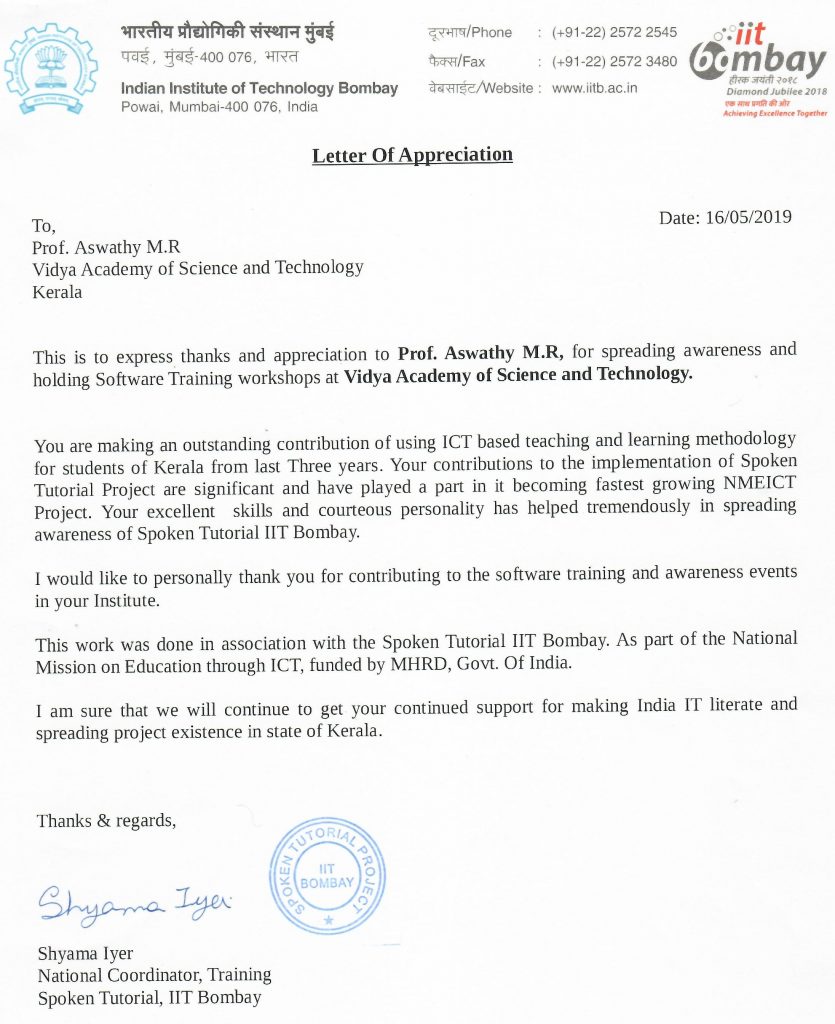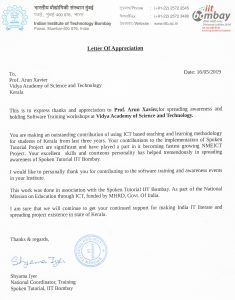Spoken Tutorial, IIT Bombay, appreciates the work of faculty members Aswathi M R and Arun Xavier
Great recognition and great honour for Ms Aswathi M R for Mr Arun Xavier! Great recognition and great honour for Vidya Academy of Science & Technology!! Our Vidya! Our Pride!!
Letters of Appreciation from IIT Bombay
The Indian Institute of Technology Bombay has awarded separate special Letters of Appreciation to Ms Aswathi M R (AP, CSE Dept) and Mr Arun Xavier (AP, EEE Dept) of Vidya for “spreading awareness and holding Software Training worksshops at Vidya Academy of Science & Technology”. The Appreciation Letters note that both faculty members have been “making outstanding contributions to using ICT based teaching and learning methodology for the students of Kerala for the last three years.” The letters also extol their contributions to the implementation of the Spoken Tutorial Project. Ms Aswathi and Mr Arun have done their much praised work as part of the Spoken Tutorial IIT Bombay project which is a part of the National Mission on Education through ICT funded by the HRD Ministry, Govt of India.
About Spoken Tutorials

A spoken tutorial is a an audio-video tutorial that explains an activity performed on the computer. An expert explains the working of a software, by demonstrating it on the screen, along with a running commentary. A screencast software makes a movie of the entire activity, both the screen and the spoken part. This movie is the spoken tutorial. The running commentary can be in English or in any other language. We have chosen a typical spoken tutorial to be of 10 minute duration. Although only a small topic can be covered in ten minutes, by stringing together many tutorials, one can come up with study plans that are capable of teaching advanced topics as well.
Spoken tutorial is a recording of an actual session. As a result, it can capture every step that is required to explain an activity. This completeness, combined with an accompanying audio-video tutorial makes the spoken tutorial the best way to document and to explain a software or a computer based activity. Creating a document in any other way is inefficient. A ten minute video, for example, can have about 100 screen transitions. Imagine the work involved in taking screen shots and using them to create a text document, say a pdf file. The size of the video created is of the order of 1MB per minute, for a 800×600 screen size in normal resolution. This allows about ten hours of instruction to be packed in a CD. It also allows transmission through low bandwidth networks.
The Letters of Appreciation



